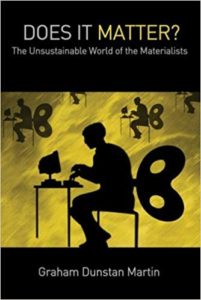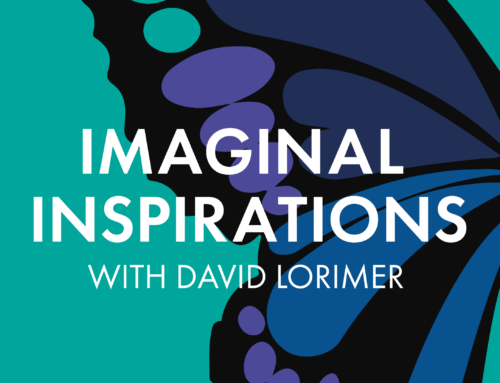Book review by Max Payne
Does It Matter? The unsustainable world of the materialists
Graham Dunstan Martin
Floris Books 2005, 288 pp, £20.00 pb
ISBN 0-86315-533-2
If Mind is more than Brain – then What?
It is still the reigning paradigm in science that consciousness can be reduced to the operations of the brain. Graham Martin sets out a powerful case against this dogma: one wishes that most of the contributors to the Journal of Consciousness Studies could be made to read it. He shows that materialists either deny the existence of the inner experience they undoubtedly possess, or they start by describing inner sensations and by linguistic legerdemain slide over to nerve messages and neurones while concealing that they passed over the important boundary between inner and outer. The argument that machines possessing artificial intelligence (AI) can have the equivalent of human consciousness is demolished. Most human conscious experience is tacit and cannot be expressed in any words or equation, It is therefore systematically impossible to imagine how any robot could be programmed to imitate a human being. And even if, to believe the impossible, it were, the robot would not possess the inner experience that makes us human. Even our present knowledge of matter suggests the impossibility of totally reducing mind to any physical description. Indeterminacy and non-locality place systematic limits on our knowledge of subatomic energies. According to quantum physics those energies exist in a paradoxical superposition of contradictory possibilities which only collapse into our reality through the process of observation. Observation requires an observer. Thus the deepest knowledge of matter needs a knower to know it.
Therefore mind cannot be reduced to matter. The alternatives are either a dualism of mind and matter, or Idealism, which as the opposite of materialism, reduces matter to mind, or a deep Monism which reduces both mind and matter to something that transcends both. On any of these answers mind, or consciousness, is something which at minimum is a field coterminous with matter, and at maximum totally transcends it. What then is the nature of the field of consciousness? Martin goes for deep Monism and returns to the question of what matter really is. Quantum physics tells us that subatomic particles of energy pop in and out of the quantum vacuum all the time. The standard theory of the “big bang” holds that space and time emerged from the quantum vacuum in the same way at the beginning of the universe 1.3 x 107 years ago. The quantum vacuum is not, therefore, nothingness, but the plenum which holds the possibility of everything.
Martin then gives his version of the Anthropic Principle. It is calculated that there are only 1085 particles in the entire universe, and the chances of a universe like ours appearing by chance are very many powers of ten more than that. He suggests therefore that some sort of “intelligent design” may have to brought in to explain why our universe is here at all. At this point, many readers who have followed his arguments sympathetically up till now may be reaching for their guns. Intelligent design is usually held to imply some Old Man in the Sky who with one hand writes the Old Testament and votes Republican, and with the other nudges natural selection and world events when they go off course. Martin is more subtle, and perhaps far more profound. Certainly he holds that, not only the appearance of our universe, but also biological evolution are evidence for intelligent design. The argument is that just as the quantum vacuum holds all possibilities of matter, so in eternity there is a plenum that holds all time and all consciousness. It is indeed the One of the mystics and so design and purpose are immanent in the not only in the emanation of existence but in its continuing operation in time. The result is an evolutionary theory very similar to that of Sri Aurobindo or Teilhard de Chardin.
What evidence is offered for this extreme metaphysical speculation? Martin points to the witness of the mystics East and West. He accepts the argument that the mystics who experience pure consciousness in which the self dissolves are those who have gone furthest and have reached the ultimate One. This is a complete reversal of the current 21st century scientific world view. We think our whole universe is the result of a random fluctuation of nothingness, that our planet is a chance accident, and that life developed by a random process of natural selection, which just happens to give one species large brains; these brains, in turn, produce the unexplained epiphenomenon of consciousness. Following Henri Bergson, Graham Martin suggests that our brains act as a filter to a wider consciousness that transcends them, and that the whole universe is a particular emanation from the limitless possibilities contained within the absolute One. Such a total reversal of world view is unlikely to have a mass conversion at the moment: nevertheless, it could be the reigning world view of the 22nd century – if civilisation lasts that long.



